Pies, parades and presidential pardons: The history of Thanksgiving day
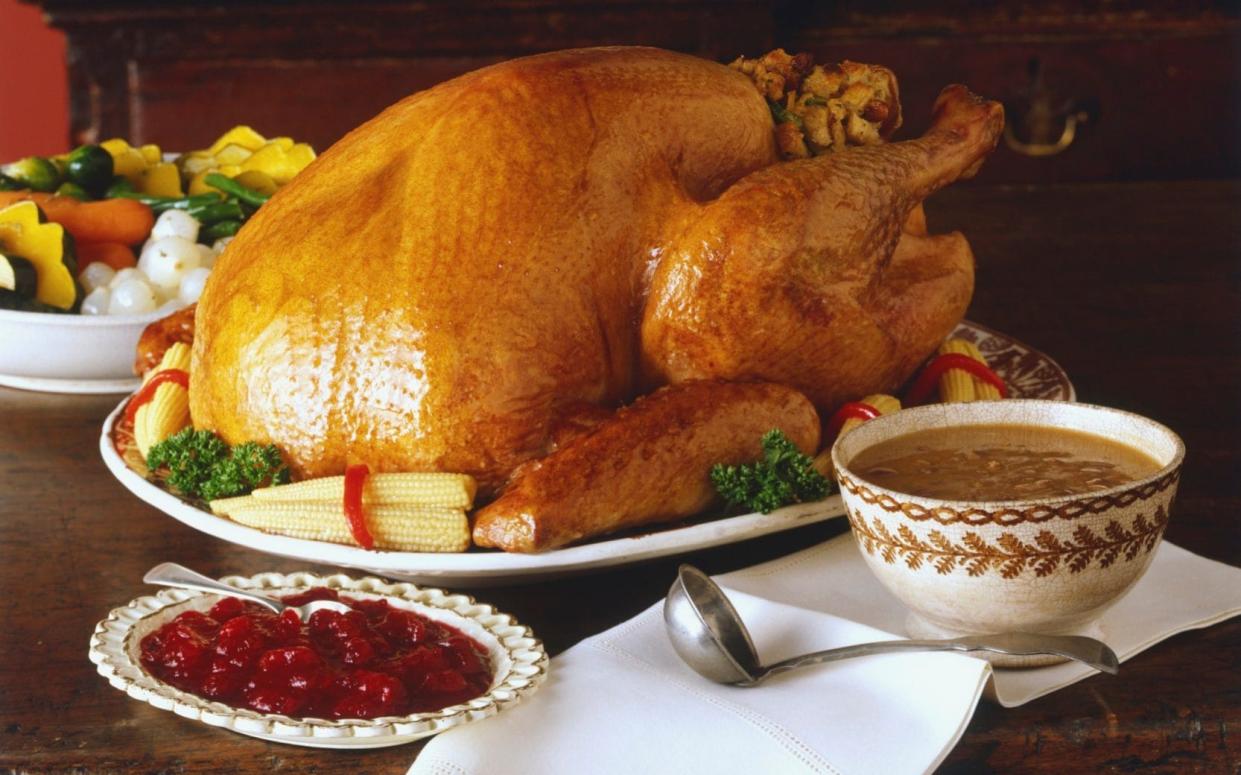
Thanksgiving Day is one of the biggest events in the American calendar but the most exposure many of in Britain get to the holiday is by watching US television series' Thanksgiving-themed episodes.
How did the day become so important? Why does the president pardon a turkey, and what on earth is 'ambrosia'? Here is everything you need to know.
When is Thanksgiving 2019?
Thanksgiving always takes place on the fourth Thursday in November – the day before Black Friday. This year, the American celebration falls on Thursday November 28.
It traditionally kicks off the 'holiday season' in the United States and the day was set in stone by President Franklin D. Roosevelt in 1939, with it later being approved by Congress in 1941. FDR changed it from Abraham Lincoln's designation as the last Thursday in November (because there are sometimes five Thursdays in the month).
While Britons think of it as a warm-up for the Yuletide period, many Americans think it of it as just as important as Christmas.
In fact, more people in the US celebrate Thanksgiving than they do Christmas. Thanksgiving Day is a secular holiday in a country that officially separates church and state so this probably makes sense.
However while the US Thanksgiving is the most well-known, it isn't the original: it was first celebrated by the arctic explorer Martin Frobisher in 1578 in Canada– more than 40 years before the Pilgrim fathers arrived in the New World. Canadians now celebrate a separate Thanksgiving on the second Monday in October.
The history of Thanksgiving
Thanksgiving Day can be traced back to the 1621 celebration at the Plymouth Plantation, where the religious refugees from England known popularly as the Pilgrims invited the local Native Americans to a harvest feast after a particularly successful growing season.
The previous year's harvests had failed and in the winter of 1620, half of the pilgrims had starved to death. Luckily for the rest, members of the local Wampanoag tribe taught the Pilgrims how to grow corn, beans and squash (the Three Sisters); catch fish, and collect seafood.
There are only two contemporary accounts of the 1621 Thanksgiving, but it's clear that turkey was not on the menu. The three-day feast included goose, lobster, cod and deer.
'The National Thanksgiving Proclamation' was the first formal proclamation of Thanksgiving in America. George Washington, the first president of the United States, made this proclamation on Oct 3, 1789.

Then in 1846, author Sarah Josepha Hale waged a one-woman campaign for Thanksgiving to be recognised as a truly national holiday.
In the US the day had previously been celebrated only in New England and was largely unknown in the American South. All the other states scheduled their own Thanksgiving holidays at different times, some as early as October and others as late as January.
Hale's advocacy for the national holiday lasted 17 years and four presidencies before the letter she wrote to Lincoln was successful. In 1863 at the height of the Civil War he supported legislation which established a national holiday of Thanksgiving on the last Thursday of November.
Lincoln perhaps wanted the date to tie in with the anchoring of the Mayflower at Cape Cod, which occurred on Nov 21, 1620. Although we now use the Gregorian calendar. In 1621 the date would have been Nov 11 to the Pilgrims who used the Julian calendar.
So Hale finally got her wish. She is perhaps now better known, though, for writing the nursery rhyme 'Mary Had a Little Lamb'.
In 1939, President Roosevelt moved Thanksgiving up a week to try and give a boost to retailers before Christmas during the Great Depression.
Several states followed FDR’s lead but 16 states refused the holiday shift, leaving the country with rival Thanksgivings. FDR changed his mind after coming under pressure from Congress and in 1941, the a resolution was passed returning the holiday to the fourth Thursday of November.
Atlantic City mayor Thomas D. Taggart later described the Thanksgiving holiday from 1939–1941 as "Franksgiving".
Turkey, pies and stuffing
There are several potential reasons Americans eat turkey on the big day: one claims that the pilgrim Edward Winslow wrote a letter about that now-famous meal in 1621 which mentioned a turkey hunt before the dinner.
Another theory says the choice of turkey was inspired by Queen Elizabeth I who was eating dinner when she heard that Spanish ships had sunk on their way to attack England. She was so thrilled with the news she ordered another goose be served. Some claim early US settlers roasted turkeys as they were inspired by her actions.
Others say that as wild turkeys are native to North America, they were a natural choice for early settlers.
When European settlers encountered turkeys for the first time in the early 1500s, they incorrectly identified the birds as a type of guineafowl. Since this group of birds were thought to come from Turkey, the North American bird was dubbed 'turkey fowl'.
This later became shortened to 'turkey' and entered the vernacular. The English navigator William Strickland, who introduced the turkey into England in 1550, was granted a coat of arms which included a "turkey-cock in his pride proper".
So what comprises the classic Thanksgiving dish?
Turkey: and/or ham, goose and duck or turduken (a spatchcocked combo of three whole birds!)
Stuffing (also known as dressing): a mix of bread cubes, chopped celery, carrots, onions and sage stuffed inside the turkey for roasting. Chestnuts, chopped bacon or sausage, and raisins or apples are also sometimes included in the stuffing.
Pies: pumpkin pies are most common, but pecan, apple, sweet potato and mincemeat pies are also quite popular.
Thanksgiving recipe inspiration
From pumpkin pie to mac and cheese, Americans go all out for Thanksgiving. Here are our favourite recipes.
Delicious sweet pastry combined with the popular autumn squash. Share America's love for pumpkin pie with this traditional, simple recipe.
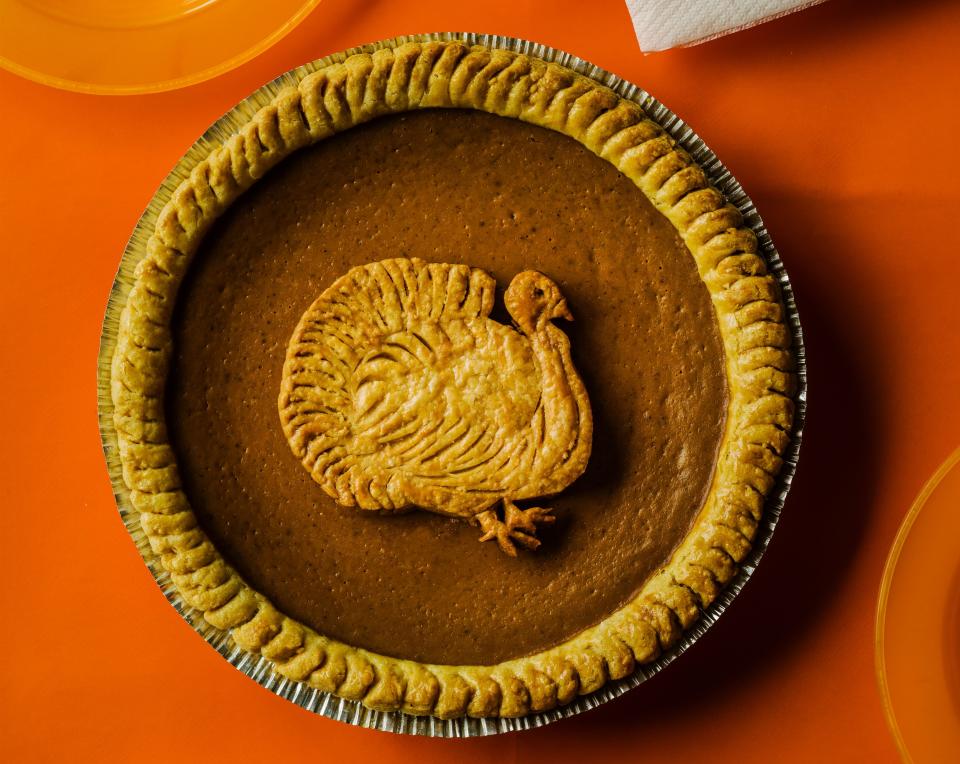
This light and fluffy cornbread, coated in melted butter and honey, is a classic Thanksgiving Day dish.
Individual cornbread buns spiced with paprika and fresh chilli – delicious eaten warm with butter and bacon.
A crisp, golden-brown turkey is often the centrepiece of a typical Thanksgiving dinner and this traditional recipe is perfect for those wanting to serve up the staple dish as part of their own feast.
Roasted carrots with cardamom and star anise
A glorious side dish that you can bung in the oven and forget about. The carrots emerge burnished and lightly spiced.
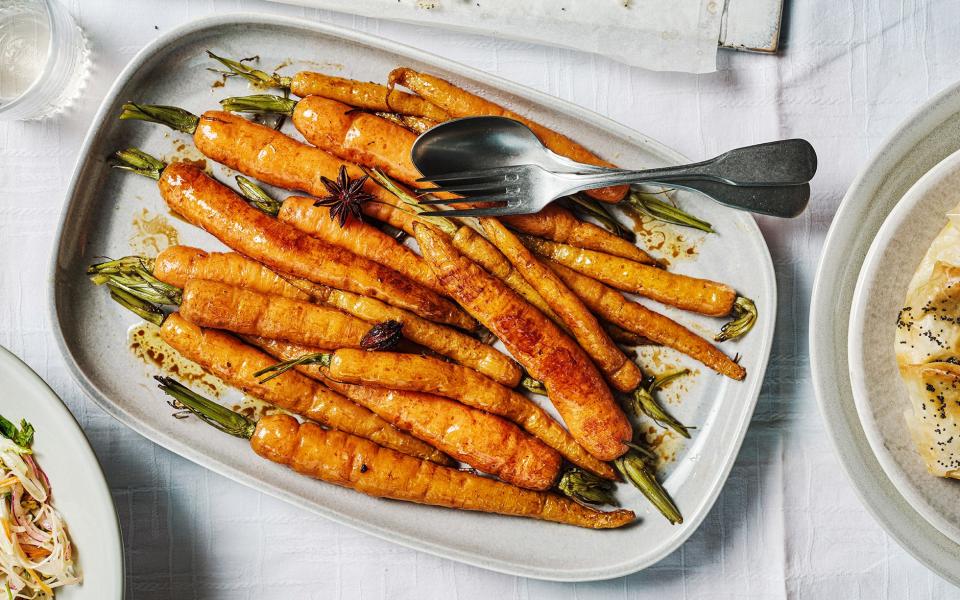
Pork, apple and hazelnut stuffing
These balls of mince pork, apple and toasted hazelnuts, gently fried in a little goose fat, are a perfect accompaniment to the roast turkey.
Diana Henry's simple recipe for macaroni and cheese requires no sauce-cooking or pasta-boiling, helping you to serve the American favourite in minimal time.
American-style salted caramel pancakes
Treat yourself to a sweet US-inspired breakfast on Thanksgiving Day, using this salted caramel pancake recipe.
Individual gluten-free pecan pies made with dates instead of refined sugar.
The Presidential reprieve
Eating turkey is actually more associated with Thanksgiving than it is Christmas in the States with over 50 million turkeys served up every year in the US.
Every year, though, the POTUS ‘pardons’ at least one turkey, sparing them from the oven. Earlier last year, rumours circulated that that President Trump had reversed President Obama's turkey pardons - however online outrage soon gave way as it emerged this actually was 'fake news'.
The public presentation of two prize turkeys to the commander-in-chief in the lead-up to Thanksgiving had been a time-honoured photo op since the 1940s.
But on Nov 17, 1989 – 200 years after George Washington's proclamation (see above) – President George H.W. Bush formalised the tradition when he pardoned a 50lb turkey in the White House Rose Garden.
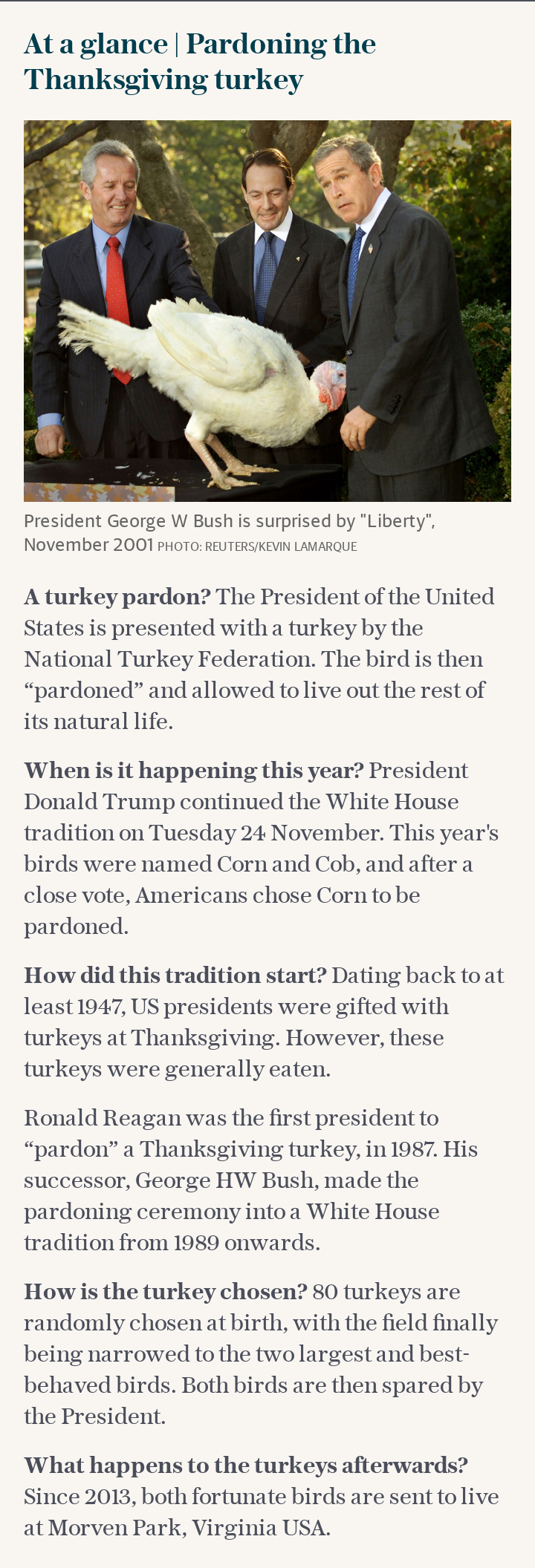
“Let me assure you," Bush said to the 30 schoolchildren present, "this fine turkey will not end up on anyone’s dinner table, not this guy. He’s granted a presidential pardon as of right now.”
The presidential turkey pardon has remained an annual Thanksgiving ritual ever since.
How is football integral to the Thanksgiving holiday?
Like soccer on Boxing Day in the UK, football (the American version) plays a major role in Thanksgiving.
The University of Detroit Stadium hosted the first Thanksgiving Day football game in 1934, pitting the Detroit Lions against the Chicago Bears.
The game was the brainchild of G.A. Richards, the first owner of the Detroit Lions. He was keen to promote the new franchise in a baseball-mad city, so he approached NBC to get them to broadcast the game across their national radio network. They agreed and the game became the first ever network broadcast event.
The game was such a hit it became a tradition in the US and football is now an integral part of the day.
Detroit has played a game every year since, breaking only for World War Two. The Dallas Cowboys, too, have played every year on Thanksgiving since 1966, only missing two years in 1975 and 1977.
The annual Macy's parade
Another Thanksgiving tradition is the Macy's parade in New York City – an annual pageant of floats, cheerleaders, marching bands and gigantic balloons.
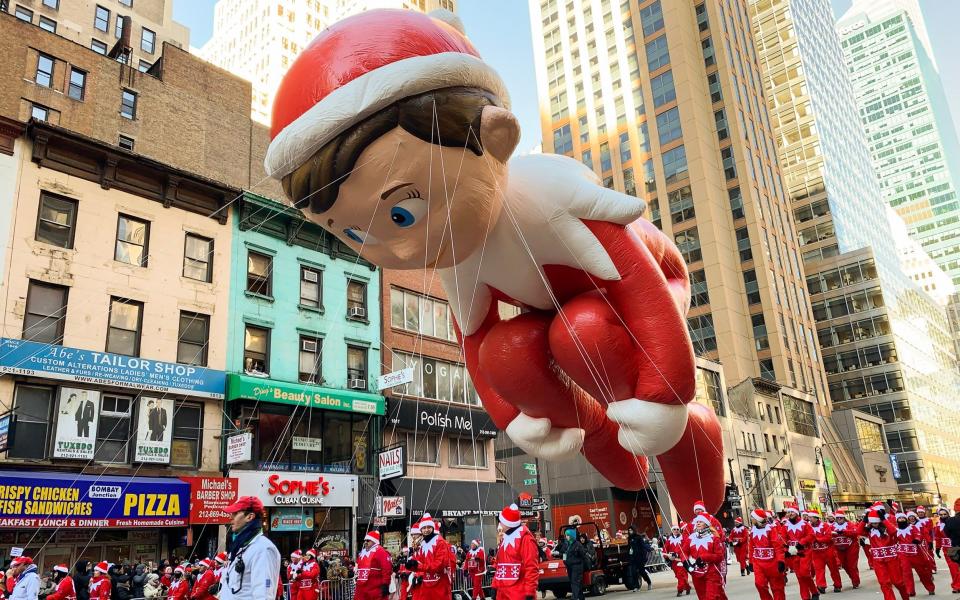
The parade dates back to the 1920s when many of the immigrant workers at Macy's department store were keen to celebrate the American holiday with the sort of festival their parents had thrown in Europe. It originally started from 145th Street in Harlem and ended at Herald Square, making a 6-mile (9.7 km) route.
The newest route was introduced with the 2012 parade. This change eliminated Times Square and rerouted the parade down Sixth Avenue, a move that was protested by the Times Square BID, Broadway theatre owners and other groups.
New York City officials preview the parade route and try to move as many potential obstacles out of the way, including traffic signals.
The floats aren't the only things battling traffic on the big day: the 12-day Thanksgiving period between from Nov 20 to Dec 1 will likely see over 25 million travelling to destinations worldwide according to trade organisation Airlines for America (A4A).
There's a Thanksgiving in the UK?
The UK has an equivalent to Thanksgiving, although it's a lot less of a big deal: Harvest Day. While we usually take a few non-perishables down to our local church and enter our autumn vegetables in competitions, Thanksgiving in North America is a much more plentiful and extravagant affair.
Yet it is still celebrated over on this side of the pond, with London offering a number of places to celebrate Thanksgiving. According to the 2011 census, there were 177,185 Americans living in England and Wales so it’s becoming increasingly fashionable for restaurants and pop-ups to host meals, events and celebrations.
However American expat Sally Peck argued on our website that her favorite (sic) holiday would never work in the UK, saying that Brits don't really get it.
Thanksgiving would never work in Britain, because it is the day that self-deprecation forgot. Is it a holiday commemorating the Anglo-Saxon invasion of a country that already belonged to someone else? Yes. And what must have been an incredibly awkward dinner party between invader and invadee? Right again.
How to throw the best autumn party
While the US is the place to be for Thanksgiving fanfare, the celebrations can be easily brought to the comfort of your own personal space.
In fact, more Britons are choosing to celebrate the changing seasons and entertain guests in their own homes, celebrating the arrival of crisper days and darker nights with food, fireworks and decorations.
If you're looking to host a gathering for your family and friends, get tips, advice, recipes and inspiration from our guide to throwing the ultimate autumn party.

